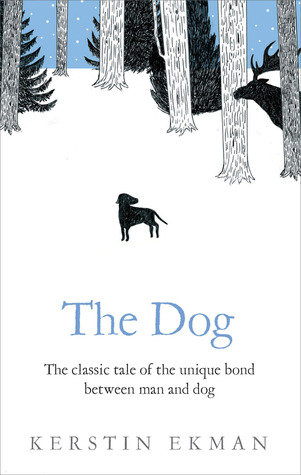“Where does something begin?” is the opening line to Kerstin Ekman‘s The Dog (1986, tr. Linda Schenck and Rochelle Wright, 2009), and it seems at first a silly question. Where else but the beginning? However, this is tale set in the cyclical pattern of the natural world: where animals live, breed, and die; where plants, once fertilised, disperse seeds for the next generation; and where the passing of seasons sees winter snapping at its own tail. In this cycle of life, we need an entry point as:
It doesn’t begin. There’s always something else before it. It begins the way a stream starts as a rivulet and a rivulet starts as a trickle of water in the marsh. It’s the rain that makes the marsh water rise.
We therefore begin with a puppy (“A dog. But he didn’t know that”) who has become separated from his mother and now finds himself sheltering, lost and alone, under a spruce’s root.
The root encircled him like a rough brown arm but it didn’t keep him warm.
The journey the dog takes, as he takes tentative steps in the world is like exploring the world beyond a wintery Bob Ross painting, where among the happy little trees there’s all manner of life going on in a perennially snow-covered Sweden. At the ground-level the natural world is alive, with fat bugs, voles, grouse that take to the skies when disturbed, otters, and the occasional moose. Those distant cousins, foxes, compete for food. Everything is a learning opportunity for the young dug: scents, tastes, sensations, and danger.
He was on his own, working out what he needed to know.
The bulk of the book is the dog’s adventure as he learns to live in the world, first by instinct (hunger, thirst) and later by the knowledge he accrues, banking sensations for future reference rather than, say, recollection:
Remembering and forgetting are the same murky depths. Something swirls up from the sludge – he recognises it. It settles – he forgets but he knows. He is just the hard mask over vivid things remembered, elusive things forgotten.
As seasons pass and the dog grows, in ability, awareness, and size, he better equips himself for situations. If hungry, he knows where to hunt for eggs and voles, and he knows the danger from owls (“game birds fled, flapping off between the trees, not even attacking in self-defence. Owls, though, dived down.”) But on the edges of the spruce forest there’s another aspect of nature to learn about: humans. They’re a great unknown, doing incomprehensible things, using strange tools. But while all the other beasts may flee, dog’s are of course man’s best friend and have a different relationship, perhaps even an instinctual affinity, with humans. Although, as The Dog shows, to make the leap from the cold, curled root of a spruce to a warm, loving bond with man takes the building of trust
While the wider book brings nature to life, where it really exceeds is in its observations. Ekman’s eye is wise to the natural world. She’s watched animals interact and noticed the way berries ripen, wrinkle, and fall. And she’s clearly spent many a day with a four-legged friend, that the dog truly feels alive on the page. So well realised is he that it would be no surprise if Ekman actually went as far as abandoning a puppy in the woods and settled back to jot down her observations via a hidden camera. The sniffing, the marking of territory, and each drawn out stretch. Every moment patiently watching, always attentive to threats. Every flight from risk or wag of the tail. His sense of curiosity and purpose.
Slushy water and sour lingonberries. Feathers in the moss, straggly, odourless. Nothing but water in his aching stomach, wet paws in the marsh. Push on, push on, slow and sloggy. Chew on feathers, suck on bones. Water dripping on nose, stinging eyes and aching belly. Traipse and trudge. Crouch with belly to the snow. Push on with nose to the ground.
But on the edges of the spruce forest there’s another aspect of nature: humans. They’re the great unknown in nature, doing incomprehensible things at the edges of the animals’ world. They hunt and shelter differently; they burn things and use machinery. While all the other beasts may flee, the dog is of course man’s best friend and has a different relationship, perhaps even an instinctual affinity, at the core of his own nature.
Peppered throughout the book there are a few accompanying illustrations by artist Henrik Krogh, charcoal (?) sketches that add some further texture to the book’s scenes, but they arguably aren’t needed, so clear are the descriptions. It would be hard to comment on Ekman’s style, given it’s translated from Swedish, but the rendered prose is light and precise, with enough white space to believe the words are resting on snow.
A rich fable relayed in beautiful detail, we watch as the dog takes two parallel journeys, learning how to survive in a vicious world and, more emotionally, learning to trust others. Having questioned where to begin, the tale having wagged the dog needs an exit, which it duly takes, knowing that the longstanding bond between man, like the cycle of nature, is unbreakable.
